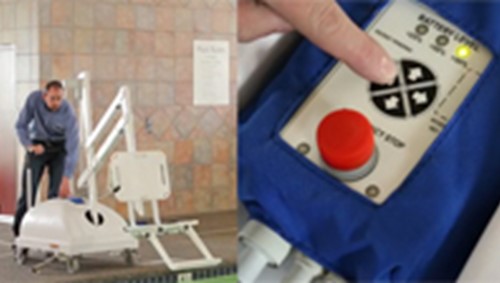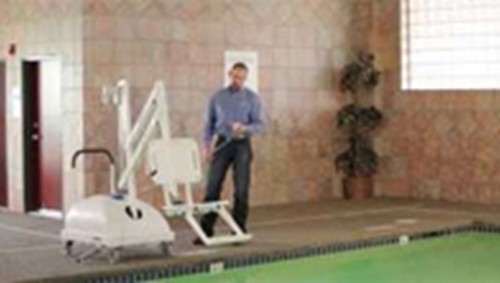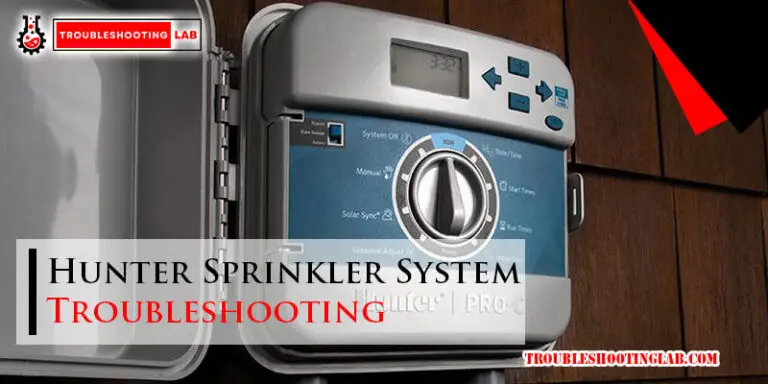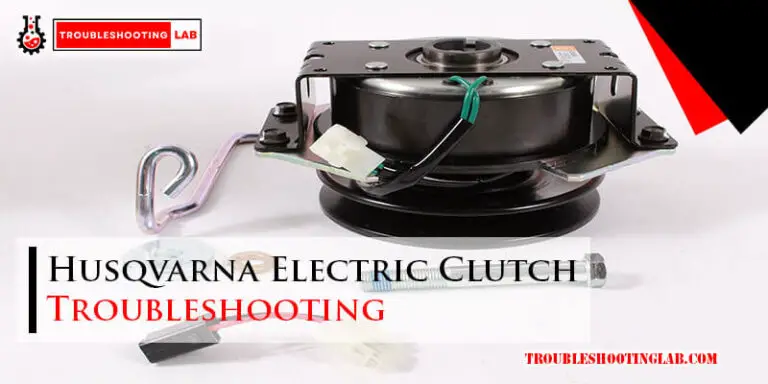Pal Pool Lighting Troubleshooting: Quick Fixes for Common Issues
Pool lighting can transform your backyard oasis into a night-time paradise. But sometimes, these lights can cause trouble.
Understanding common issues with Pal pool lighting can help you fix problems quickly. Whether it’s flickering lights, wiring issues, or faulty bulbs, troubleshooting is essential. Knowing how to diagnose and solve these problems can save you time and money. This guide will walk you through typical Pal pool lighting issues and how to address them.
From basic checks to more detailed solutions, learn how to keep your pool lights shining bright. Let’s dive in and ensure your pool remains a beautiful, illuminated retreat.

Credit: www.srsmith.com
Common Pool Lighting Problems
Pool lighting issues can ruin the ambiance of your pool area. Understanding common problems helps in quick troubleshooting. Addressing these issues promptly ensures a well-lit and inviting pool.
Flickering Lights
Flickering lights can be frustrating. This problem often points to a loose connection. Check the wiring and ensure everything is secure. Loose bulbs can also cause flickering. Make sure the bulbs are tightly screwed in.
Sometimes, the issue could be with the transformer. A faulty transformer can cause inconsistent power supply. Inspect the transformer and replace it if necessary. Regular maintenance can prevent flickering lights.
Lights Not Turning On
If your pool lights are not turning on, start by checking the power source. Ensure the circuit breaker is not tripped. Reset it if needed. Next, inspect the light switch. A faulty switch can prevent lights from turning on.
Burnt-out bulbs are another common cause. Replace any non-working bulbs. Wiring issues can also stop lights from working. Examine the wiring for any damage. Repair or replace damaged wires immediately.

Credit: www.srsmith.com
Diagnosing Electrical Issues
Pool lighting issues can be frustrating. Proper lighting enhances pool safety and aesthetics. Electrical problems often cause lighting failures. Diagnosing these issues is crucial. Let’s explore key steps to identify and resolve these problems.
Checking The Circuit Breaker
The circuit breaker protects your electrical system from damage. An overloaded circuit can cause the breaker to trip. Follow these steps to check the circuit breaker:
- Locate the breaker panel. It is usually near the pool equipment.
- Open the panel door. Identify the breaker controlling the pool lights.
- Check if the breaker has tripped. A tripped breaker will be in the middle position.
- If tripped, reset the breaker. Push it to the “off” position first. Then switch it back to the “on” position.
- Observe the pool lights. If they turn on, the issue was a tripped breaker.
Inspecting Wiring Connections
Loose or damaged wiring can disrupt pool lighting. Inspecting wiring connections ensures a stable power supply. Follow these steps:
- Turn off the power to the pool lights. Use the circuit breaker to do so.
- Locate the wiring connections. They are usually near the pool light fixture or junction box.
- Visually inspect the wires. Look for loose connections or damaged insulation.
- Tighten any loose connections. Use a screwdriver if needed.
- Repair or replace damaged wires. Use proper electrical tape or wire nuts.
- Restore power to the pool lights. Test if the lights function correctly.
Effective troubleshooting requires patience and attention to detail. By checking the circuit breaker and inspecting wiring connections, you can identify and fix many common electrical issues.
Dealing With Water Ingress
Water ingress is a common issue in pool lighting systems. It can cause electrical problems or damage the lighting fixtures. Understanding how to deal with water ingress can save your pool lights from frequent repairs. The following sections will guide you through sealing light fixtures and replacing gaskets.
Sealing Light Fixtures
The first step in preventing water ingress is to ensure that all light fixtures are properly sealed. Check the fixtures for any visible cracks or gaps. These can allow water to seep in. Use a high-quality, waterproof sealant to fill any openings. Apply the sealant evenly and let it dry completely before testing the lights.
Here is a simple checklist to follow:
- Turn off the power supply to the pool lights.
- Remove the light fixture from the pool.
- Inspect for any cracks or gaps.
- Apply waterproof sealant to any openings.
- Allow the sealant to dry fully.
- Reinstall the light fixture and turn on the power.
Replacing Gaskets
Gaskets are essential for keeping water out of light fixtures. Over time, gaskets can wear out or become damaged. Replacing them is crucial to maintaining a waterproof seal.
Follow these steps to replace gaskets:
- Turn off the power to the pool lights.
- Remove the light fixture from its housing.
- Carefully remove the old gasket.
- Clean the surface where the gasket sits.
- Place the new gasket in the correct position.
- Reinstall the light fixture and ensure it is sealed tightly.
- Turn on the power and check for leaks.
Using a table can help you remember the key points:
| Step | Description |
|---|---|
| 1 | Turn off the power. |
| 2 | Remove the fixture. |
| 3 | Remove the old gasket. |
| 4 | Clean the surface. |
| 5 | Place the new gasket. |
| 6 | Reinstall the fixture. |
| 7 | Check for leaks. |
By following these steps, you can effectively deal with water ingress in your pool lighting system. This ensures that your pool lights remain functional and safe.
Burnt-out Bulbs
Burnt-out bulbs are a common problem with pool lighting. They can affect the overall ambiance of your pool area. Identifying and replacing burnt-out bulbs ensures your pool remains well-lit and inviting. This guide will help you troubleshoot and fix burnt-out bulbs in your pool lighting system.
Identifying Burnt Bulbs
Burnt bulbs are easy to identify. Look for signs such as:
- The light is completely off.
- Flickering lights.
- Dim or uneven lighting.
To confirm a bulb is burnt out, you can perform a simple test:
- Turn off the pool lights.
- Remove the bulb.
- Check for any visible damage or dark spots.
- If unsure, test the bulb in a working fixture.
Steps To Replace Bulbs
Replacing burnt-out bulbs is straightforward. Follow these steps:
- Turn off the power: Ensure the pool light is off at the circuit breaker.
- Remove the fixture: Unscrew the light fixture from the pool wall.
- Open the fixture: Carefully open the fixture to access the bulb.
- Replace the bulb: Remove the old bulb and install a new one.
- Reassemble the fixture: Close the fixture and ensure it is sealed properly.
- Test the light: Turn the power back on and check if the new bulb works.
It is always advisable to keep a few spare bulbs handy. This ensures quick replacements and minimal downtime for your pool lighting system.
Addressing Color Changes
Addressing color changes in your Pal Pool lighting can be tricky. This guide will help you understand and correct common color issues. Let’s dive into the solutions.
Understanding Led Color Shifts
LED lights in your pool sometimes change colors unexpectedly. This can happen for various reasons. One common cause is a faulty connection. Loose or damaged wires can affect the color output. Another reason is the power supply. Voltage fluctuations can also lead to color shifts.
Knowing these common issues helps in diagnosing the problem. Regular maintenance and checks are essential. They help in preventing these unexpected color changes.
Correcting Color Issues
Start by inspecting the wiring. Look for any loose or damaged connections. Tighten any loose wires and replace any damaged ones. Ensure the power supply is stable. Use a voltage tester to check the power levels. If the voltage is inconsistent, you may need a new power supply.
Sometimes, the problem lies with the LED light itself. Test the LED light by swapping it with a new one. If the color issue persists, the problem is likely with the wiring or power supply. Always follow safety guidelines when handling electrical components.
Regular maintenance can prevent many of these issues. Check the wiring and power supply regularly. Keep the lighting system clean and free from debris. Proper care ensures your pool lighting stays vibrant and consistent.
Timer And Remote Control Issues
Pool lighting adds a touch of magic to any pool, especially during evening swims. But sometimes, issues with timers and remote controls can dim the experience. This guide helps you troubleshoot common problems and get your pool lighting back on track.
Resetting Timers
Timers control when your pool lights turn on and off. If your lights are not working as expected, it might be time to reset the timer.
- Locate the timer box: Find the timer box near your pool equipment.
- Turn off the power: Ensure the power to the timer box is off. Safety first!
- Reset the timer: Press the reset button on the timer. Refer to the manual for exact instructions.
- Set the correct time: Adjust the time settings to match your desired schedule.
- Test the lights: Turn the power back on and check if the lights work as programmed.
Reprogramming Remote Controls
Remote controls make it easy to manage pool lights from a distance. If your remote is unresponsive, reprogramming might help.
- Check the batteries: Ensure the remote has fresh batteries.
- Consult the manual: Follow the reprogramming steps in your remote’s manual.
- Sync the remote: Hold the sync button on the remote and the receiver. This pairs them.
- Test the functionality: Try turning the lights on and off using the remote.
Troubleshooting timer and remote control issues can be straightforward with these steps. Regular maintenance and following the manual will keep your pool lights shining bright.
Maintaining Light Fixtures
Maintaining light fixtures in your pool is crucial. It ensures a well-lit and safe swimming environment. Regular upkeep can prevent costly repairs and extend the life of your fixtures. Here are some essential tips for maintaining your pool light fixtures.
Regular Cleaning
Regular cleaning of your pool light fixtures is important. It helps in maintaining their brightness and efficiency. Follow these steps for cleaning:
- Turn off the power supply to the pool lights.
- Remove the light fixture from its niche.
- Clean the fixture with a soft cloth and a mild detergent.
- Rinse thoroughly with clean water.
- Reinstall the fixture and turn on the power.
Regular cleaning prevents dirt buildup. It also ensures the light shines brightly underwater.
Preventing Algae Buildup
Algae buildup can affect the performance of pool lights. It can also make the water look cloudy and uninviting. Here are some tips to prevent algae buildup:
- Maintain proper chemical balance in the pool water.
- Brush the pool walls and light fixtures weekly.
- Use an algaecide regularly to prevent algae growth.
- Ensure proper water circulation and filtration.
Preventing algae buildup keeps the light fixtures clean and the water clear.
By following these simple maintenance tips, you can keep your pool light fixtures in top condition. Enjoy a bright and safe swimming experience!
Safety Tips
Ensuring safety is crucial while troubleshooting pool lighting issues. Handling electrical components, especially near water, demands caution. This section provides essential safety tips to help you stay safe.
Working With Electricity
Electricity and water can be a dangerous mix. Follow these steps to stay safe:
- Turn off the power at the circuit breaker before starting.
- Use a voltage tester to ensure the power is off.
- Wear rubber-soled shoes and stand on a dry surface.
- Avoid working alone; have someone nearby in case of an emergency.
Using Proper Tools
Using the right tools is key for safe and effective troubleshooting. Here’s what you need:
| Tool | Purpose |
|---|---|
| Voltage Tester | Check if the power is off. |
| Insulated Screwdrivers | Prevent electrical shocks. |
| Wire Strippers | Remove insulation from wires safely. |
Keep these tools handy and in good condition to ensure your safety. Always use tools with insulated handles to prevent electric shock.

Credit: www.troublefreepool.com
Frequently Asked Questions
Why Is My Pool Light Not Turning On?
Check the power source. Ensure the switch is on. Inspect for blown fuses or tripped breakers.
How Do I Replace A Burnt-out Pool Light Bulb?
Turn off power. Remove the light fixture. Replace the bulb. Reinstall fixture and test.
What Causes Pool Light Flickering?
Loose connections or faulty wiring. Check for corrosion or damaged wires. Tighten or replace as needed.
How To Troubleshoot A Leaking Pool Light?
Inspect the gasket. Look for cracks or damage. Replace the gasket if necessary. Ensure a proper seal.
Can I Use Led Bulbs In My Pool Light?
Yes, LED bulbs are energy-efficient. Ensure compatibility with your fixture. Check voltage requirements.
Conclusion
Solving Pal pool lighting issues can seem tricky at first. But with patience and the right steps, it’s manageable. Check connections, inspect bulbs, and clean fixtures regularly. These simple actions often fix common problems. If issues persist, consult a professional.
Keeping your pool lights in top shape ensures a safe and enjoyable swimming experience. Remember, routine maintenance prevents many problems. Happy swimming!






